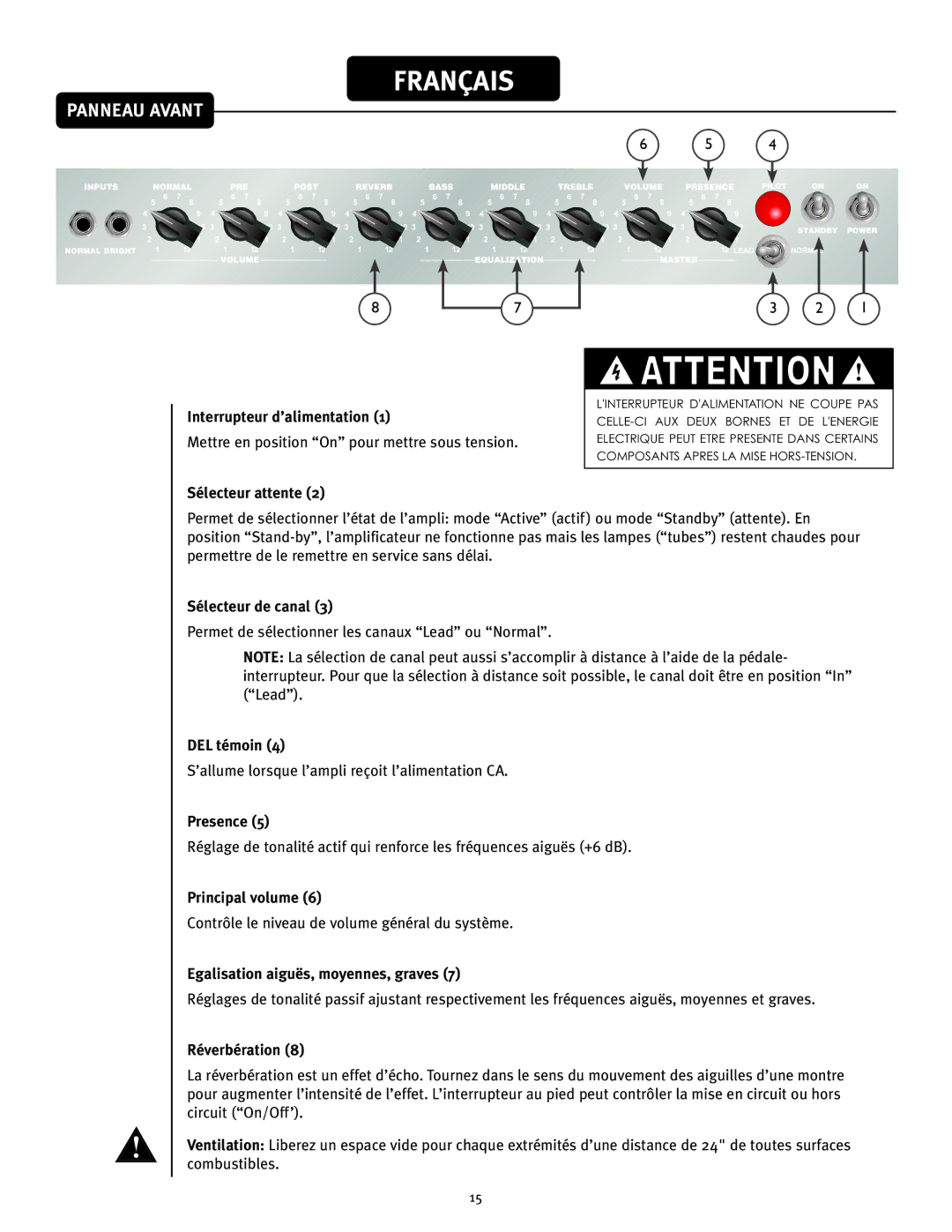50 410, 50 212 specifications
The Peavey 50 212 is a versatile and powerful guitar amplifier that has garnered a loyal following among guitarists for its combination of sound quality, durability, and features. This amplifier is particularly valued in both live performance and studio settings, offering an impressive range of tonal capabilities.One of the standout features of the Peavey 50 212 is its dual-channel design, which allows players to switch seamlessly between two distinct tonal characteristics. The clean channel delivers a pristine and articulate sound, perfect for clean chord strumming and intricate picking. In contrast, the lead channel offers a higher gain setting, ideal for driving solos or creating heavier, distorted tones. This versatility makes the 50 212 suitable for a wide range of musical styles, from rock and blues to country and jazz.
The amp is powered by a pair of 6L6 power tubes, providing rich, warm tones that can enhance the character of the guitar being played. The inclusion of both preamp and power amp tubes contributes to the overall dynamic response and sensitivity, enabling players to express nuances in their playing style. Additionally, the amp features a built-in reverb effect, adding depth and ambiance to the sound without introducing significant noise or artifacts.
A significant characteristic of the Peavey 50 212 is its Celestion speakers, which are known for their clarity and punch. The configured 2x12 speaker layout provides ample power and projection, making it a formidable presence on stage. Furthermore, the amp offers an easy-to-navigate control panel, allowing players to tweak their sound with precision. Controls for gain, treble, mid, bass, and reverb give players complete command over their tone.
Construction quality is another strong point of the Peavey 50 212. The solid wooden cabinet is built to withstand the rigors of transportation and frequent live performances. This durability does not compromise the aesthetic appeal, as the classic design is both stylish and functional.
In conclusion, the Peavey 50 212 is a testament to Peavey’s commitment to producing high-quality, reliable gear for musicians. With its dual-channel flexibility, tube-driven warmth, and robust construction, this amplifier is an excellent choice for guitarists seeking a reliable workhorse that delivers exceptional sound across a variety of genres. Whether you’re on stage or in the studio, the 50 212 stands out as a powerful tool for shaping your musical expression.

